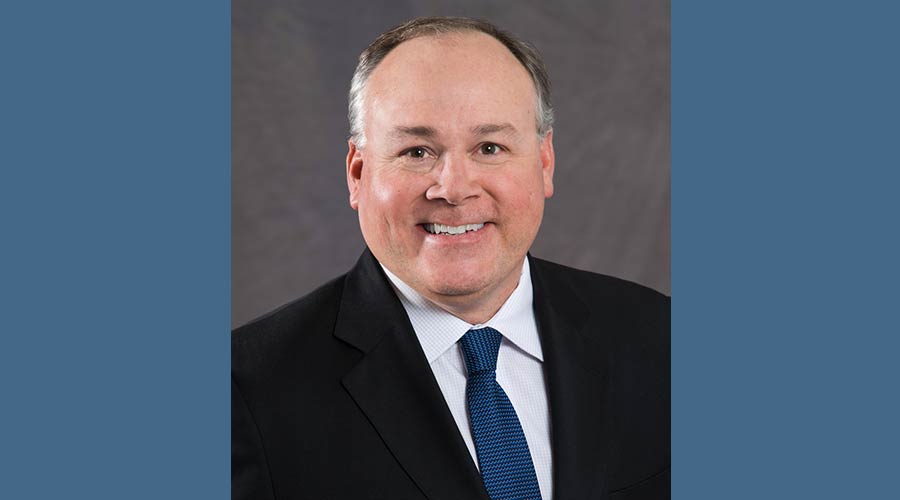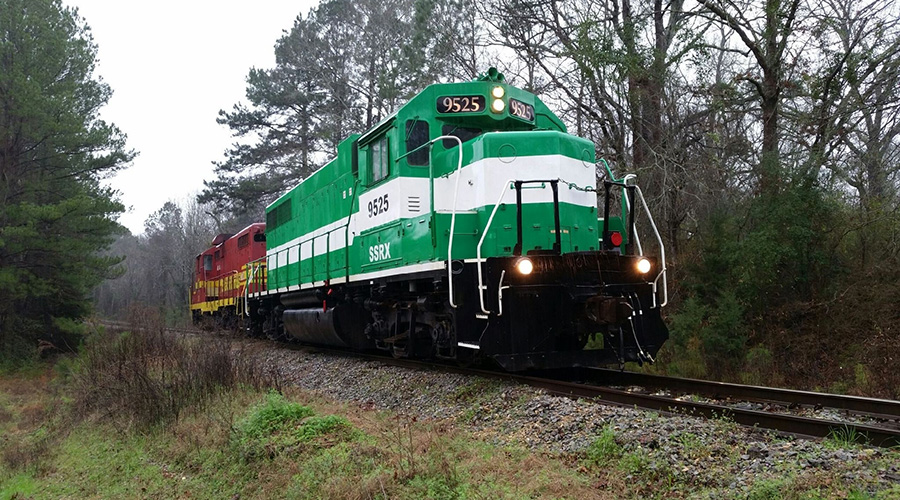By Julie Sneider, Senior Editor
Norfolk Southern Railway formalized its environmental sustainability program and established the rail industry’s first chief sustainability officer in 2007; published its first sustainability report in 2008; and in 2021 set an ambitious science-based target to reduce greenhouse gas emissions (GHG) intensity 42% by 2034.
Although NS has focused on running the railroad in a more environmentally friendly way for the past 18 years, it wasn’t until January of this year that the Class I announced it had published its first “Climate Transition Plan,” an 80-page roadmap that details how NS will achieve and measure its decarbonization efforts.
“All the Class Is and thousands of companies worldwide have made near-term commitments to reducing GHGs, but less than 1% of them actually have a plan to get there,” says Josh Raglin, chief sustainability officer at NS. “And now, we’re hearing from investors, customers, regulators and even employees who are saying, ‘Hey, it’s great we’ve got this goal but how are we actually going to meet this near term?’”
While the NS sustainability team generally knew how the company was going to get to that 2034 goal, it didn’t have a specific action plan for getting there, Raglin says.
As a result, the company spent the better part of 2023 working with several subject matter experts to come up with actions and a timeframe. They came up with a list of about 50 initiatives that already were underway at the company, plus another dozen or so that are “up and coming,” according to Raglin. The company has achieved a 6% reduction in its GHG emissions intensity and continues to make progress through a number of decarbonization initiatives, he says.
 “Anything we can do to reduce diesel fuel is going to reduce emissions. It’s good for the environment and the bottom line.” — Josh Raglin, NS chief sustainability officer Norfolk Southern Corp.
“Anything we can do to reduce diesel fuel is going to reduce emissions. It’s good for the environment and the bottom line.” — Josh Raglin, NS chief sustainability officer Norfolk Southern Corp.Tracking performance indicators
The initiatives were bucketed into what Raglin calls three “levers” or performance indicators: improving locomotive fuel efficiency 13% by 2027; increasing renewable energy usage to 30% by 2030; and reaching 20% consumption of low-carbon fuels by 2034.
“Locomotive fuel efficiency is first because locomotives represent over 90% of our scope 1 and scope 2 emissions,” says Raglin. “It’s also our third largest expense, so anything we can do to reduce diesel fuel is going to reduce emissions. It’s good for the environment and good for the bottom line.”
According to the CTP, NS, under a partnership with Wabtec, is on track to convert 1,000 locomotives from DC to AC traction by 2025.
“We’re bringing those locomotives up to the latest technology, adding new engines, basically creating a new locomotive but recycling about half the material,” he says. “We’re going to have over 1,000 units completed by the end of next year and the current upgrades can improve fuel efficiency by up to 25%, which is hugely significant.”
The upgraded units, which are recycled at the Class I’s Juniata Locomotive Shop in Altoona, Pennsylvania, receive more than new engines. Also installed are smart sensors and energy software that help cut idle time, increase reliability, improve haulage and require less maintenance of the units.
The plan also calls for increasing the blend of biofuels to 7% over the next few years, and to pilot locomotive runs using higher biodiesel blends and renewable energy.
“Other things are going to come along, like alternate propulsion, that are being worked on, but a lot of those things are in the super early stages,” says Raglin. “We’ve really got to think about how we are going to meet this near-term target in the next 10 years as these other technologies are being developed.”
NS is also assisting in the decarbonization of the economy through its role in the supply chain. One example: the shift to electric vehicles, including the batteries they require.
“We're the largest shipper of automobiles in North America, and we're shipping batteries now. We're shipping the raw material that goes into batteries,” he says.
Another climate-change effort where NS is connected via the supply chain is through low-carbon fuels.
“We're shipping the feedstock and, in many cases, the finished product for things like renewable diesel and sustainable aviation fuel,” he adds.
 Under a partnership with Wabtec, NS is on track to convert 1,000 locomotives from DC to AC traction by 2025. Norfolk Southern Corp.
Under a partnership with Wabtec, NS is on track to convert 1,000 locomotives from DC to AC traction by 2025. Norfolk Southern Corp.Evaluating, adjusting for risk
The CTP also features an evaluation of and adjustment for the risks that come with trying to tackle climate change, such as emerging regulations, legal exposure and market changes. And it tracks and measures the company’s accomplishments along the way.
One example of a current climate-change regulation that NS is monitoring is whether the U.S. Environmental Protection Administration will grant the California Air Resources Board (CARB) a waiver so that it can implement its “in-use locomotive” rule.
Designed to reduce greenhouse gas emissions, the rule prohibits locomotives older than 23 years from operating in California, starting in 2030 for switch, industrial and passenger locomotives; and in 2035 for line haul locomotives. By 2047, 100% of annual fleet usage in California must be from zero-emissions locomotives. CARB approved the rule in October 2023.
“We’re following that rule very closely,” says Raglin. “The challenge is that if California is able to have that waiver, it could potentially lead to other states adopting similar measures. And the reality is that the California rule, as it states right now, is not based on technology that is available at this time.”
Raglin described the CARB rule as an “unfunded mandate” in that it requires railroads to pay into a spending account to help pay for upgrades to cleaner locomotive technologies.
“We also have to think about the whole freight-rail industry as a whole, because we don’t operate locomotives just within certain states,” he adds.
NS developed its CTP also to be transparent with customers, many of whom have climate-change response plans that call for contractors and suppliers to help them achieve their emissions-reduction targets.
“Companies are realizing that up to 90% of their emissions are in their supply chain, and a lot of that can be contractor transport. So, when rail can come to the table, particularly when we have the service levels like we have now, then sustainability makes a difference,” says Raglin.
Trying to become a bigger component of customers’ logistics solutions and shift more freight transportation from truck to rail also requires transparency, Raglin says. One tool designed to increase shipping transparency is RailPulse, a technology platform launched in 2020 by a joint venture involving NS, short-line and rail-car owners.
RailPulse aims to accelerate the adoption of GPS and other telematics technology that can provide real-time information on a rail-car's location, health and condition. Four Class Is — Union Pacific Railroad, Canadian Pacific Kansas City and most recently CSX — so far have joined RailPulse.
“This is really important for our industry as customers need dynamic ETAs; they need to know where their products are going and when they’ll get there,” says Raglin.
RailPulse will enable customers to precisely monitor shipments in real time and know whether their rail cars are in motion; and the status of the rail cars, such as whether they’re loaded or unloaded. Moreover, RailPulse will monitor the mechanical health of those cars.
“Customers are going to get a lot more visibility into their supply-chain network,” says Raglin. “I would say that’s going to be a game-changer for the industry.”
Another transparency-product that NS is beta-testing and expects to release sometime this year is ModalView, which is designed to help intermodal drayage drivers move freight more efficiently. Last year, NS announced it had partnered with DrayNow Inc. to develop and deploy the app to improve the customer and driver experience by creating real-time shipment tracking information and document capture of drayage shipments. NS invested $8 million into the joint venture.
Making the drayage process more seamless and efficient will save time, money and fuel, says Raglin.
Raglin anticipates NS will need to update its CTP every three to five years due to changes in technology, the marketplace and regulations. And even though shifting political winds may influence certain state or federal regulators’ views on climate change, decarbonization will remain a business reality for railroads, Raglin believes.
“The thing that we bring to the table is the opportunity for modal shift,” he says. “Rail is the most environmentally friendly way to move product over land. It means less emissions, but also less congestion on our roadways. And that always resonates with elected officials and regulators, no matter if you have a ‘D’ or an ‘R’ after your name.”


